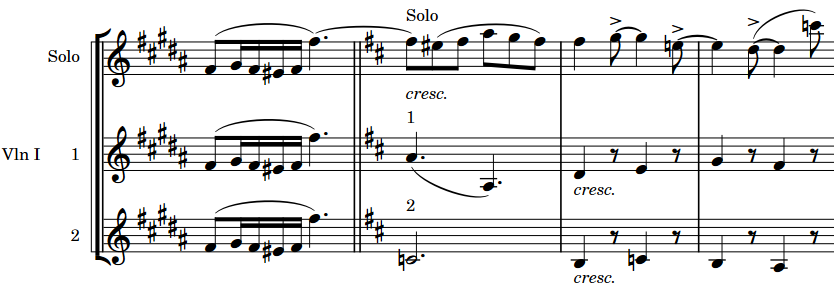Divisi
Divisi is when players split, or “divide”, in order to play multiple lines of music, commonly for a limited passage, before returning to play together, or “tutti”. Divisi passages can be notated with all lines on a single staff or across multiple staves.
Divisi is a technique most commonly used in orchestral string writing, as the string section typically contains a large number of players compared to the number of staves. For example, large orchestras commonly have twelve first violins all playing the same part most of the time. Dividing those players into multiple parts allows composers to write more complex contrapuntal music.

If the division is relatively simple, it is possible to write all parts on the same staff and label the section, with an indication of how many players are required for each line if necessary. If the parts have different rhythms at times, you can input them into separate voices on the same staff.
However, when a section is divided into multiple parts that are too different to be clearly written on a single staff, it is necessary to divide them onto multiple staves. In Dorico Elements, divisi changes allow you not only to divide sections into any number of parts with any number of staves, but also to include solo lines and group staves as required.
In Dorico Elements, you cannot input divisi changes. However, divisi changes are shown if you import or open a project that contains them.